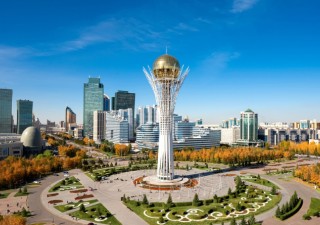Sharing experimental data and research results between teams located in different countries is a common practice for a multinational company with Chinese local development capacity. Nowadays, this practice may be subject to the China Export Control Law (ECL), which came into effect on December 1, 2020. The new law provides the first comprehensive legal framework for China to regulate export activities concerning military and dual-use products and technologies for national security and public policy reasons. Understanding the ECL and mitigating its risks has become a top priority for the companies with cross-border business regarding technologies and intellectual properties.
ECL impacts on each phase of the IP lifecycle
From creation of IP to filing applications for registration
The ECL issue of greatest concern is export control items. Before filing applications for IP registration, technologies may exist as trade secrets or confidential information if the company takes proper measures to maintain them as secrets. Technologies, therefore, may fall within the scope of controlled items in accordance with the ECL. Under Article 2 of the ECL, the controlled items include such intangible assets as “technologies, services and items relating to the maintenance of national security and interests, and the performance of anti-proliferation and other international obligations.” The controlled items also include “technical information and data related to the items.” The broad definition has the result that any technology or service relating to national security and interests may be subject to the ECL, no matter whether they are patentable, copyrightable or maintained as trade secret. It’s unclear, however, whether non-technical data such as personal information would also be regulated under the ECL, besides the China Cyber Security Law. In a brief, the subjected technologies may exist in drawings, blueprints, photographs, plans, models, manuals, design data, engineering reports, know-how, work/assembly instructions, installation/operation guides, maintenance procedures, testing methods, repair analysis, wiring diagrams, technical documents, source codes and algorithms.
(It shall be noted that, during the third round of legislative deliberation of the NPC Standing Committee, the suggestion that “source codes and algorithms related to core technologies of the controlled items should not be simply classified as technologies or data, and therefore the source code and algorithm shall be included in the controlled items.” The effective ECL, however, did not adopt the recommendation. Therefore, the source code and algorithm related to the controlled items under the ECL need to be clarified in follow-up interpretations.)
Despite the ECL specifying the scope of controlled items, the ECL does not clarify the applicable conditions. This brings difficulties for companies to accurately identify the controlled items. For example, whether disclosed information developed in China, such as a section of the source code of open source software, is regarded as controlled items? Further interpretations and clarifications are needed.
Second, companies having items within the scope of controlled items shall refer to the export control lists for a clear guideline. Although the export control lists under the ECL are still being developed, the Ministry of Commerce (MOFCOM) has confirmed in local media reports that the export control lists attached to the previous relevant regulations are still in effect at present. By now, China has formulated several export control lists for sensitive items such as nuclear, biological, chemical, missile, and military products. Most items on the lists are recited in the Dual-use Items and Technology Export License Management Catalogue. It is reasonably expected that the export control lists for the controlled items under the ECL would incorporate the substantial contents of these export control lists. The cutting-edge technologies in which Chinese companies and the government invests heavily would be more likely on the export control lists as dual-use items. In Article 2 of the ECL, such dual-use items refer to “goods, technologies and services that can be used for the civil purposes as well as military purposes, or that are helpful to enhance military potential, especially for the design, development, manufacturing or use of weapons of mass destruction and their delivery vehicles.”
Third, it shall be understood that the activities regulated by the ECL are not limited to “export” in the general understanding, i.e., exporting goods or technologies from the territory of China to foreign countries. Also, the ECL controls the following activities: Chinese individuals or entities transfer the controlled items to foreign individuals or entities located in China (“deemed export”); transit, transshipment, through transport, or re-export of controlled items; and export of controlled items from areas under special supervision of the Customs as well as bonded supervision areas and bonded logistics centres. The provisions cover almost all forms of transfer of controlled items to foreign individuals or entities or to anyone in a foreign country. For example, a Chinese innovator who shares design data with a foreign colleague in China may be subject to the controlled activities, even if the foreign colleague resides in China. Reporting the experimental progress to an exterritorial headquarter via emails from the Chinese subsidiary may also be subject to the ECL.
It should be noted that, when deciding to file a patent application, a company may designate a foreign country (e.g., the United States) as its first filing country. This would fall within the scope of controlled activities under the ECL. Also, it may implicate other related Chinese laws and regulations, including the Patent Law, the Regulations on the Administration of the Import and Export of Technology, the Measures on Work Relating to Transfer of Intellectual Property to Overseas Parties (Trial Implementation), etc. For instance, Article 19 of the amended China Patent Law, which will come into effect on June 1, 2021, requires “prior secrecy examination” that “any entity or individual intends to file an application in a foreign country for a patent for inventions or utility models made in China”.
Fourth, every individual or entity involved in the course of invention is likely to be the potential obligator. Under the ECL, obligators include “export operators,” “importers,” “end users of controlled items” and intermediary service providers for export transactions. Despite lacking a clear definition of “export operators” under the ECL, it shall be broadly interpreted. That is, besides inventors and engineers and their employers, export operators may also include third-party contractors providing technologies and services (e.g., testing services) for non-Chinese persons and companies in China.
From filing applications to registrations
Companies may assign a patent application’s right to a foreign entity after filing the patent application in China, which may be subject to the ECL. In particular, a Chinese subsidiary may opt to transfer the patent application right to its foreign parent company. This assignment shall involve other related Chinese laws and regulations, including the Patent Law.
After registration of IP
The ECL becomes more influential after the registration of IP as the scopes of controlled items, controlled activities and obligators are expanded.
Under Article 2 of the ECL, the controlled items further include tangible assets containing the controlled technologies. The ECL, however, only provides a general scope of controlled items without further specification. This may cause uncertainty for companies in identifying which goods in their daily operation are subject to the ECL. For example, if software does not contain the underlying technical information, should it also be regarded as a controlled item?
Registered IP rights may be transferred or licensed to a foreign individual or entity, which is also governed by the ECL. There, however, remains some issues, such as how the transfer or licensing of IP rights to the foreign multinational companies from a Chinese subsidiary would be subject to the ECL, and to what extent the cross-border technology collaboration within the same group company shall be controlled.
All enterprises involved in the technology import and export trade chain are likely to become potential obligators under the provision of the ECL. This further includes third-party service providers in connection with activities of shipping, delivery or customs clearance; third-party e-commerce trading platforms; and financial services for any export operators. Agencies supporting cross-border patent transfer or licensing are also likely to be included.
How companies minimize IP risks under the ECL
Establish internal IP compliance systems to meet regulatory expectations in China
A well-established internal compliance system is integral to meet the regulatory requirements of the ECL. Moreover, in Article 14, the ECL clearly states that the export control authorities may grant “facilitation measures” such as a general license to those who have established an internal compliance system for export control and are in good operation. Companies are advised to form a specialized department or designate a specialist to do so in light of the ECL and subsequently-issued detailed rules and guidance. Companies should particularly elevate compliance awareness of the commercial and research and development department in the entire product lifecycle, including product development, international patent filing, publication, assignment and licensing, data storage and transmission, and technology transactions, etc. Export operators must keep monitoring the control list issued by the export control authorities and any changes thereto, and ensure that the export of controlled items is in compliance with the issued license. Further, companies should be sensitive to the ongoing and potential international tensions between China and other countries, and keep close eyes on the temporary control list that the authorities may issue based on any particular developing global situations. In addition, export operators also need to be able to identify those items which people “know or should have known” may have certain risks and are required to apply for an export license even they are not on the control list.
Pay close attentions to “deemed export” during technical collaboration
Exporters need to play close attention to activities that may be deemed as export due to the ambiguity of the ECL in this regard. “Deemed export” commonly refers to quasi-export activities which often occur in the process of joint technology development, creation and prosecution of IP. In light of the United States’ Export Administration Regulations (EAR), found at 15 CFR § 734.13, releases of controlled technology to foreign persons in the U.S. are “deemed” to be an export to the person’s country or countries of nationality. Typical organizations using “deemed” export licenses include universities, high technology research and development institutions, biochemical firms, as well as actors in the medical and computer sectors. Article 2.3 of the ECL similarly defines that the “export control” includes “provision of controlled items by a citizen, legal person, or unincorporated organization of the People’s Republic of China to a foreign organization or individual” without stating where the “provision” occurs. However, further clarification is needed as to whether location matters in this scenario and what activities may constitute the “provision,” for example, whether a joint development with China-based foreign nationals is a provision of technology to the foreigners; how about the technology transfer from the Chinese branch of a multi-national company to its headquarter overseas; whether the disclosure of the conception and data of your invention to a foreign patent agency can be deemed as export, etc. Thus, companies should closely follow the relevant implementing rules and/or timely consult with government authorities when necessary.
Properly transfer and manage data
China’s prosperous digital economy sees a growing demanding on date security. Article 2 of the ECL explicitly includes “data related to the items” in the “controlled items.” Therefore, companies which export or licence software from China will be subject to dual examination on both technology and data thereof. Companies in sensitive fields such as quantum teleportation, 5G, artificial intelligence, big data, and others that may refer to national security and interest, must pay particular attention to the transfer or licensing of computer software and relevant databases. In addition, companies need to check whether the server where technical data is stored is accessible by people outside China and whether any limitation of access by geography or person has been implemented. These measures may be helpful in identifying the risk of crossing the line of “deemed export.”
Compliance with other Chinese laws regulating international technology transfer
In addition to the ECL, there have been multiple laws which similarly regulate the export of technologies in certain circumstances. For example, Article 16 of the Foreign Trade Law of the People’s Republic of China (Revision 2016) provides that the state may “restrict or prohibit import or export to safeguard national security, public interests or public moral.” Article 2 of Regulations of the People’s Republic of China on the Administration of the Import and Export of Technology (Revised in 2019) further provides that the export activities to be regulated may include “patent assignment, transfer of patent application rights, patent licensing, transfer of tech secrets, technical services and other forms of technology transfer.” Moreover, Article 19 of China’s Patent Law (Revision 2020) requires the prior secrecy examination for “any organization or individual applying for patent in a foreign country for an invention or a utility model completed in China.” Therefore, companies should conduct comprehensive compliance analysis with respect to the IP transfer or transactions to meet various regulatory requirements.











